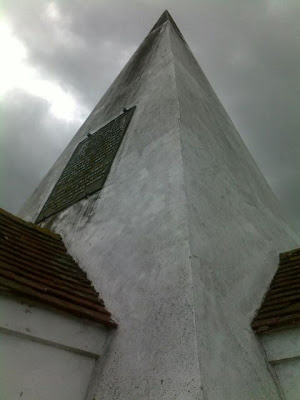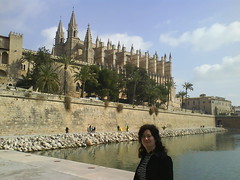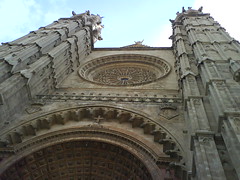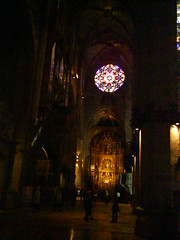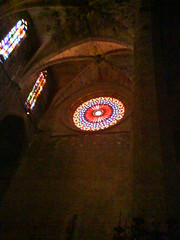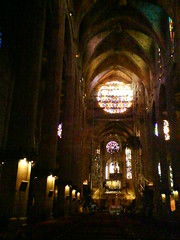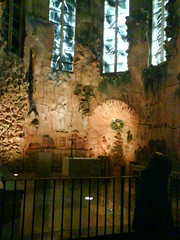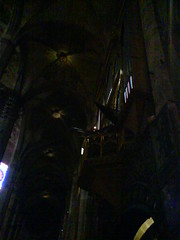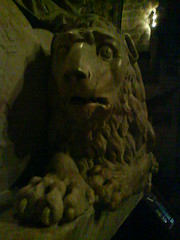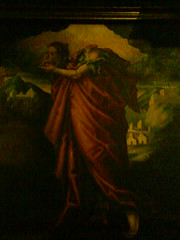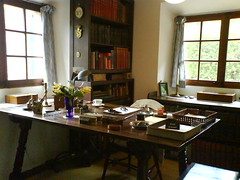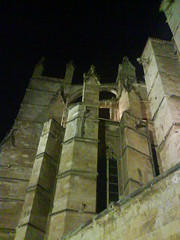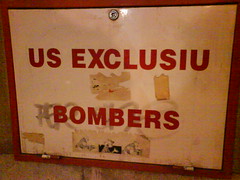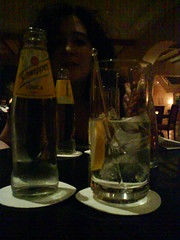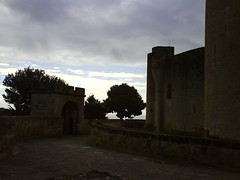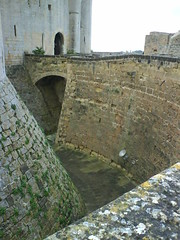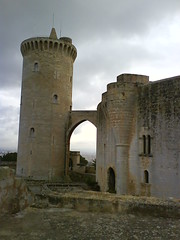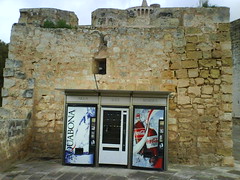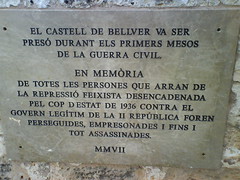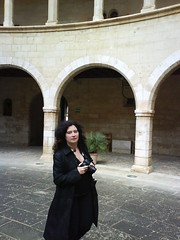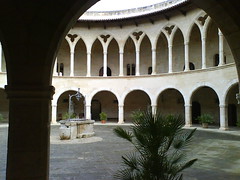The death of maestro Terrance Dicks earlier this year prompted me to revisit this novelisation which I so loved as a kid.
The TV story The Time Warrior (1973-74) was the first adventure in Jon Pertwee's final year as the Third Doctor. It introduced new companion Sarah Jane Smith and the monstrous Sontarans - though the Doctor recognises the species so has met them before off-screen. (I wrote an audio story about the Doctor's first encounter with Sontarans.)
Dicks's novelisation was first published in June 1978, by which time the Sontarans had faced the Doctor three times on screen. Dicks had been script editor on the TV version of the story: he commissioned it from Robert Holmes, oversaw the development of the storyline and rewrites on the scripts, and presumably did at least a polish. According to him, it was originally to be novelised by Holmes who only produced the 10-page prologue of the book. This presents a space battle that would have been tricky to realise on screen, and surely owe something to the opening scenes of Star Wars (1977).
The protagonist in this space battle is Jingo Linx, Commander in the Sontaran Space Corps. That first name was in the TV script but never used on screen. We learn a little of the Sontarans: their home planet is Sontara (not Sontar, as in 2008 TV episodes) and they have a "Sontaran Anthem" (which does match 2008). But Holmes tells us little about their perennial enemies the Rutans - though by the time he wrote this prologue they'd been seen on screen, in TV story Horror of Fang Rock (1977) which he had commissioned as script editor from Dicks as writer. It's surprising there's no mention here of jellyfish or shape-changing, or the eerie green glow, that neither Dicks nor Holmes sought to join up those dots.
During the space battle, Linx manages a "fly-pass through the constellation of Sagittarius." As I now know from my GCSE astronomy, a constellation only looks like a group of stars as seen from Earth, and are usually not close to one another at all. Holmes is similarly rough on history: both TV and book versions have peasants peeling potatoes - famously from the New World - in England of the Middle Ages ("the thirteenth century" according to Sarah in 1975's The Sontaran Experiment).
After the prologue, Dicks follows the TV story pretty closely. Linx crashes on Earth and makes an uneasy alliance with local warlord Irongron. When Irongron can't supply suitable nerds to help Linx fix his spaceship, the Sontaran kidnaps them from the 20th century - which gets the attention of the Doctor. Holmes' dialogue is rich and witty, perfectly establishing the characters and their worldview. Dicks' prose is straight-forward, pithily getting on with the story.
Chapter four introduces Sir Edward, Lady Eleanor and their archer Hal earlier than the TV version. Hal and Sir Edward are back from the Crusades, the implication being that Irongron and his men have not and so are sort of draft-dodgers. Lady Eleanor is a stronger character here than on screen, taking a more active role in combatting the wicked Irongron - there's a little of Lady Macbeth when she orders Hal to kill him. That neatly links to the thread of Sarah as the independent, liberated woman out of her time in a man's world.
Sir Edward's page is given a name - Eric - and we see the moment he's captured by Irongron's men, rather than just being told about it. This is Dicks the novelist adding in big action moments he would have cut as script editor. It makes me wonder how much of the screen version was his anyway - he would give writers two or three drafts before taking over their scripts.
The TV version does not give us what now seems like a glaring omission - Sarah's first impression of the TARDIS interior. It's fleeting here, but present all the same on page 53. Dicks says Sarah doesn't have time to "fully take in the wonder of her surroundings", and is more concerned about correcting another issue: how she stows away in the TARDIS without the Doctor seeing her. The simple solution is to have her hide in "a kind of cupboard" - the "kind of" suggesting something a bit more sci-fi than MFI.
Another simple intervention is the explanation of context.
Reading the book again made me aware of something I was less aware of in the TV version: how much back and forth there is between the two castles. The Doctor bests Linx or Irongron, then returns to Sir Edward's castle, only to say he must go back to face Linx and Irongron - several times. In the book, the Doctor also pops back to the TARDIS for supplies before making his stink bombs, and in popping back again to the TARDIS for the silver "umbrella" that he uses in his final battle against Linx, we're told in the book that he changes his shirt and jacket. This all makes the pacing more leisurely, less urgent. On TV, getting the "umbrella" from the TARDIS is just about excusable but making several trips into the ship feels like cheating.
And something else: Linx mocks humanity's "primary and secondary reproductive cycle" and says the Sontaran method is more efficient. But there's no mention of clones, no suggestion that there are millions more of his kind out there, just like him. This is a chance encounter, Linx visiting Earth by mistake because he's so far from his own people.
So many Doctor Who monsters are conceived as potential rivals to the Daleks, ideal for merchandising and sequels. The irony of Linx, the first we see of a multitude of clones, is that he's the perfect one-off.
The TV story The Time Warrior (1973-74) was the first adventure in Jon Pertwee's final year as the Third Doctor. It introduced new companion Sarah Jane Smith and the monstrous Sontarans - though the Doctor recognises the species so has met them before off-screen. (I wrote an audio story about the Doctor's first encounter with Sontarans.)
Dicks's novelisation was first published in June 1978, by which time the Sontarans had faced the Doctor three times on screen. Dicks had been script editor on the TV version of the story: he commissioned it from Robert Holmes, oversaw the development of the storyline and rewrites on the scripts, and presumably did at least a polish. According to him, it was originally to be novelised by Holmes who only produced the 10-page prologue of the book. This presents a space battle that would have been tricky to realise on screen, and surely owe something to the opening scenes of Star Wars (1977).
The protagonist in this space battle is Jingo Linx, Commander in the Sontaran Space Corps. That first name was in the TV script but never used on screen. We learn a little of the Sontarans: their home planet is Sontara (not Sontar, as in 2008 TV episodes) and they have a "Sontaran Anthem" (which does match 2008). But Holmes tells us little about their perennial enemies the Rutans - though by the time he wrote this prologue they'd been seen on screen, in TV story Horror of Fang Rock (1977) which he had commissioned as script editor from Dicks as writer. It's surprising there's no mention here of jellyfish or shape-changing, or the eerie green glow, that neither Dicks nor Holmes sought to join up those dots.
During the space battle, Linx manages a "fly-pass through the constellation of Sagittarius." As I now know from my GCSE astronomy, a constellation only looks like a group of stars as seen from Earth, and are usually not close to one another at all. Holmes is similarly rough on history: both TV and book versions have peasants peeling potatoes - famously from the New World - in England of the Middle Ages ("the thirteenth century" according to Sarah in 1975's The Sontaran Experiment).
After the prologue, Dicks follows the TV story pretty closely. Linx crashes on Earth and makes an uneasy alliance with local warlord Irongron. When Irongron can't supply suitable nerds to help Linx fix his spaceship, the Sontaran kidnaps them from the 20th century - which gets the attention of the Doctor. Holmes' dialogue is rich and witty, perfectly establishing the characters and their worldview. Dicks' prose is straight-forward, pithily getting on with the story.
Chapter four introduces Sir Edward, Lady Eleanor and their archer Hal earlier than the TV version. Hal and Sir Edward are back from the Crusades, the implication being that Irongron and his men have not and so are sort of draft-dodgers. Lady Eleanor is a stronger character here than on screen, taking a more active role in combatting the wicked Irongron - there's a little of Lady Macbeth when she orders Hal to kill him. That neatly links to the thread of Sarah as the independent, liberated woman out of her time in a man's world.
Sir Edward's page is given a name - Eric - and we see the moment he's captured by Irongron's men, rather than just being told about it. This is Dicks the novelist adding in big action moments he would have cut as script editor. It makes me wonder how much of the screen version was his anyway - he would give writers two or three drafts before taking over their scripts.
The TV version does not give us what now seems like a glaring omission - Sarah's first impression of the TARDIS interior. It's fleeting here, but present all the same on page 53. Dicks says Sarah doesn't have time to "fully take in the wonder of her surroundings", and is more concerned about correcting another issue: how she stows away in the TARDIS without the Doctor seeing her. The simple solution is to have her hide in "a kind of cupboard" - the "kind of" suggesting something a bit more sci-fi than MFI.
Another simple intervention is the explanation of context.
"This was an age in which explosives in any form were still unknown. Bangs and flashes and clouds of stinking smoke could have only one explanation. 'Devil's work,' screamed one of the soldiers." (p. 103)But really, there's little embellishment of events as seen on TV - though at one point there's this incongruous image:
"High on the battlements Sarah was doing a celebratory dance." (p. 104)I liked the joke that when the Doctor and Sarah disguise themselves in cassocks, his is too short and hers too long. Dicks also feels the need to provide a four-and-a-half line section explaining where those robes came from, with Sir Edward having given a "handsome donation" to two monks.
Reading the book again made me aware of something I was less aware of in the TV version: how much back and forth there is between the two castles. The Doctor bests Linx or Irongron, then returns to Sir Edward's castle, only to say he must go back to face Linx and Irongron - several times. In the book, the Doctor also pops back to the TARDIS for supplies before making his stink bombs, and in popping back again to the TARDIS for the silver "umbrella" that he uses in his final battle against Linx, we're told in the book that he changes his shirt and jacket. This all makes the pacing more leisurely, less urgent. On TV, getting the "umbrella" from the TARDIS is just about excusable but making several trips into the ship feels like cheating.
And something else: Linx mocks humanity's "primary and secondary reproductive cycle" and says the Sontaran method is more efficient. But there's no mention of clones, no suggestion that there are millions more of his kind out there, just like him. This is a chance encounter, Linx visiting Earth by mistake because he's so far from his own people.
So many Doctor Who monsters are conceived as potential rivals to the Daleks, ideal for merchandising and sequels. The irony of Linx, the first we see of a multitude of clones, is that he's the perfect one-off.






